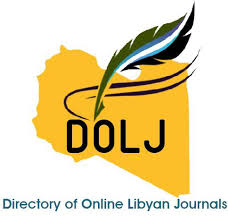Evaluation of changes in levels of plasma MDA and antioxidant vitamin E in Sudanese patients with diabetes type II
DOI:
https://doi.org/10.54361/Keywords:
Diabetes mellitus, vitamin E, MDA, LibyaAbstract
Free radicals have important roles in pathogenesis of diabetes mellitus. It has been well documented that there is a link between oxidative stress and secondary complications of diabetes. In the present study we determined and evaluated changes in levels of malondialdehyde (MDA) and antioxidant vitamin E in plasma of Sudanese patients with Type II diabetes mellitus. Total of 200 diabetic patients (90 males, 110 females) with mean age of 55.48 ± 12.14 years were recruited into the study. Control group was composed of 100 healthy volunteers (47 males, 53 females) with mean age of 53.53 ± 11.43 years. In addition to the two mentioned parameters, levels of fasting blood glucose and percentages of HbA1C levels were determined in diabetic patients and controls. There was a significant increase in the MDA level (test group) which is used as an indicator of metabolic stress, oxidative stress or lipid per oxidation marker. On the other hand; antioxidant vitamin E of the test group was reduced meaningfully. Reduction in vitamin E levels was probable due to antioxidant effect of this antioxidant vitamin. In conclusion, supplementation of antioxidant vitamins into the daily diets of diabetic patients will enhance power of non-enzymatic antioxidant defense systems.
Downloads
References
Templar J, Kon SP, Milligan TP, Newman DJ and Raftery MJ. Increased plasma malondialdehyde levels in glomerular disease as determined by a fully validated HPLC method. Nephrol Dial Transplant. 1999, 14; 4: 946-951.
Ozben T, Nacitarhan S and Tuncer N. Plasma and urine malondialdehyde levels in non- insulin dependent diabetic patients with and without microalbuminuria. Inter J Clin Laboratory Res. 1995, 25: 162-164.
Halifeoğlu İ, Karataş F, Çolak R, Canatan H and Telo S. Tip 2 diyabetik hastalarda tedavi öncesi ve tedavi sonrası oksidan ve antioksidan durum. Fırat Tıp Dergisi. 2005, 10; 3: 117- 122.
Alan WS. The role of advanced glycation in the pathogenesis of diabetic retinopathy. Exp Mol Pathol. 2003, 75: 95-108.
Singal PK, Bello-Klein A, Farahmand F and Sandhawalia V Oxidative stress and functional deficit in diabetic cardiomyopathy. Adv Exp Med Biol. 498: 213-220.
Mercuri F, Quagliaro L and Ceriello A. Oxidative stress evaluation in diabetes. Diabetes Technol Ther. 2; 4:589- 600.
Greene DA, Stevens MJ, Obrosova I and Feldman EL. Glucose-induced oxidative stress and programmed cell death in diabetic neuropathy. EurJ Pharmacol. 1999, 375: 217-223.
Ceriello A. Hyperglycemia: the bridge between non-enzymatic glycation and oxidative stress in the pathogenesis of diabetic complications. Diabetes. Nutr. Metab. 1999, 12; 1: 42-46.
Pennathur S and Heinecke JW. Mechanisms of oxidative stress in diabetes: implications for the pathogenesis of vascular disease and antioxidant therapy. Front Biosci. 2004, 9: 565-574.
Maritim AC, Sanders RA and Watkins JB. 3rd Diabetes, oxidative stress, and antioxidants: a review. J Biochem Mol Toxicol. 2003, 17; 1: 24-38.
Yag IK. Assay for blood plasma or serum. Methods Enzymol. 1994, 109: 328-331.
Cheesman KH and Slater TF. Introduction to free radical biochemistry. Br Med Bull. 1993, 49; 3: 481-493.
Jacob RA and Burri BJ. Oxidative damage and defense. Am J Clin Nutr. 1990, 63: 985-990.
Langenstroer P and Pıeper GM. Regulation of Spontaneous EDRF rebase in diabetic rat aorta by oxygen free radical. Am J Physiol. 1992, 263: 257-265.
Ceriello A, Bortolotti N, Falleti E, Taboga C, Tonutti L, Crescentini A, Motz E, Lizzio S, Russo A and Bartoli E. Total radical-trapping antioxidant parameter in NIDDM patients. Diabetes Care. 20; 2: 194-197.
Maxwell SR, Thomason H, Sandler D, Leguen C, Baxter MA, Thorpe GH, Jones AF and Barnett AH. Antioxidant status in patients with uncomplicated insulin-dependent and noninsulin-dependent diabetes mellitus. Eur J Clin Invest. 1997, 27; 6: 484-490.
Dıplock AT. Antioxdant nutrients and disease prevention: An Overview. Am J Chim Nutr. 1991, 53: 1895-1935.
Halliwell B. Free radical antioxidants in human disease. Curiosity, cause or consequence. Lancet. 344: 721-724.
Sinha M and Grosh AK. Influence of dietary vitamin A deficiency on rat digestive and absorptive functions during diabetes mellitus. Indian J Med Res. 1994, 100: 196-200.
Al-Saleh IA and Al-Doush I. Selenium levels in wheat grains grown in Saudi Arabia. Bull Environ Contam Toxicol. 1988, 59: 590-594.
Ceriello A, Giugliano D, Quatraro A, Dello Russo P and Torello R. A preliminary note on inhibiting effect of tocopherol on protein glycation. Diabete Metab. 1988, 14: 40-52.
Noberasco G, Odetti P, Boeri D, Maiello M and Adezati L. Malondialdehyde (MDA) level in diabetic subjects. Relationship with blood glucoseand glycosylated hemoglobin. Biomed Pharmacother. 1991, 45; 4-5:193-196.
Sundaram RK, Bhaskar A, Vijayalingam S, Viswanathan M and Mohan R. Antioxidant status and lipid peroxidation in type II diabetes mellitus with and without complications. Clin Sci. 1996, 90; 4: 255-260.
Ble-Castillo JL, Carmona-Díaz E, Méndez JD, Larios-Medina FJ, Medina-Santillán RM, Cleva-Villanueva G and Díaz-Zagoya JC. Effect of α-tocopherol on the metabolic control and oxidative stress in female type 2 diabetics. Biomed Pharmacother. 2005, 59: 290-295.
Krempf M, Ranganathan S, Ritz P, Morin M and Charbonnel B. Plasma vitamin A and E in type 1 (insulin-dependent) and type 2 (non-insulin-dependent) adult diabetic patients. Int J Vitam Nutr Res. 1991, 61; 1: 38-42.
Caye-Vaugien C, Krempf M, Lamarche P, Charbonnel B and Pieri J. Determination of alpha-tocopherol in plasma, platelets and erythrocytes of type I and type II diabetic patients by high-performance liquid chromatography. Int J Vitam Nutr Res. 1990, 60, 4: 324-330.
Rautalahti M, Albanes D, Haukka J, Roos E, Gref CG and Virtamo J. Seasonal variation of serum concentrations of carotene and tocopherol. Am J Clin Nutr. 1999, 57: 551-556.
Abahusain MA, Wright J, Dickerson JW and de Vol EB. Retinol, alpha-tocopherol and carotenoids in diabetes. Eur J Clin Nutr. 1999, 53; 8: 630-636.
Nourooz-Zadeh J, Rahimi A, Tajaddini-Sarmadi J, Tritschler H, Rosen P, Halliwell B and Betteridge DJ. Relationships between plasma measures of oxidative stress and metabolic control in NIDDM. Diabetologia. 1997, 40; 6: 647-653.
Ceriello PA. Oxidative stress and diabetes associated complications. Endo Prac. 2006, 12: 60-62.
Jiang ZS, Zhang SL and Cai XJ. Effect of salvia miltiorrhiza composita on superoxide dismutase and malondialdehyde in treating patients with non-insulin dependent diabetes mellitus. Chung Kuo Chung Hsi I Chieh Ho Tsa Chih. 1997, 17; 1: 32-34.
Ceriello A, Bortolotti N, Motz E, Crescentini A, Lizzio S, Russo A, Tonutti L and Taboga C. Meal-generated oxidative stress in type 2 diabetic patients. Diabetes Care. 1990, 21; 9: 1529-1533.
Downloads
Published
Issue
Section
License
Copyright (c) 2014 Elrasheed I. Mohamed, Badr Eldien H. Elabid, Altayeb Elazomi, Hana Fahelbum, Hakem Zwaik, Nazeha Mansuri, Salah Bahroun (Author)

This work is licensed under a Creative Commons Attribution-NonCommercial-NoDerivatives 4.0 International License.
Open Access Policy
Libyan journal of medical Research (LJMR).is an open journal, therefore there are no fees required for downloading any publication from the journal website by authors, readers, and institution.
The journal applies the license of CC BY (a Creative Commons Attribution 4.0 International license). This license allows authors to keep ownership f the copyright of their papers. But this license permits any user to download , print out, extract, reuse, archive, and distribute the article, so long as appropriate credit is given to the authors and the source of the work.
The license ensures that the article will be available as widely as possible and that the article can be included in any scientific archive.
Editorial Policy
The publication of an article in a peer reviewed journal is an essential model for Libyan journal of medical Research (LJMR). It is necessary to agree upon standards of expected ethical behavior for all parties involved in the act of publishing: the author, the journal editorial, the peer reviewer and the publisher.
Any manuscript or substantial parts of it, submitted to the journal must not be under consideration by any other journal. In general, the manuscript should not have already been published in any journal or other citable form, although it may have been deposited on a preprint server. Authors are required to ensure that no material submitted as part of a manuscript infringes existing copyrights, or the rights of a third party.
Authorship Policy
The manuscript authorship should be limited to those who have made a significant contribution and intellectual input to the research submitted to the journal, including design, performance, interpretation of the reported study, and writing the manuscript. All those who have made significant contributions should be listed as co-authors.
Others who have participated in certain substantive aspects of the manuscript but without intellectual input should only be recognized in the acknowledgements section of the manuscript. Also, one of the authors should be selected as the corresponding author to communicate with the journal and approve the final version of the manuscript for publication in the LJMR.
Peer-review Policy
- All the manuscripts submitted to LJMR will be subjected to the double-blinded peer-review process;
- The manuscript will be reviewed by two suitable experts in the respective subject area.
- Reports of all the reviewers will be considered while deciding on acceptance/revision or rejection of a manuscript.
- Editor-In-Chief will make the final decision, based on the reviewer’s comments.
- Editor-In-Chief can ask one or more advisory board members for their suggestions upon a manuscript, before making the final decision.
- Associate editor and review editors provide administrative support to maintain the integrity of the peer-review process.
- In case, authors challenge the editor’s negative decision with suitable arguments, the manuscript can be sent to one more reviewer and the final decision will be made based upon his recommendations.















